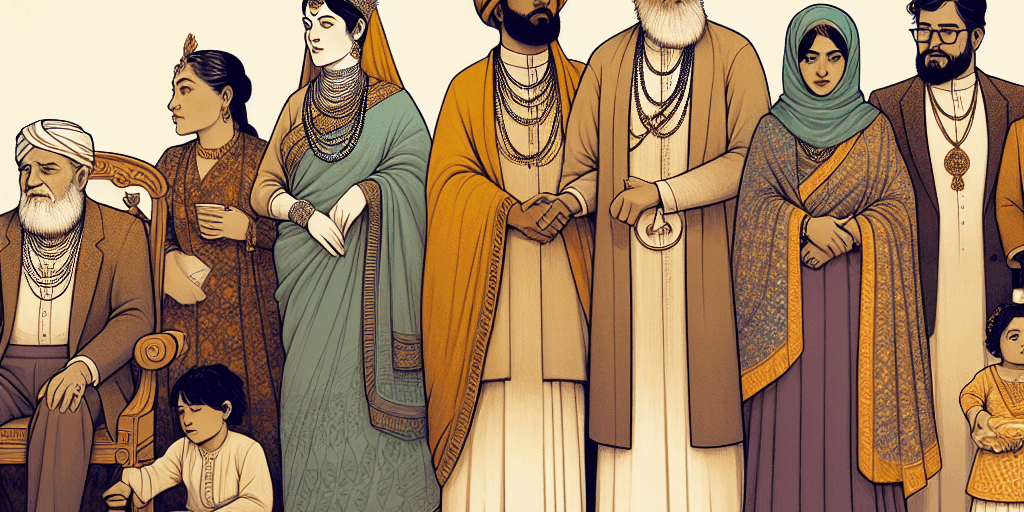From Patriarchs to Partnerships: Tracing the Evolution of Family Governance
Family governance, the framework through which families manage their affairs and transitions across generations, has undergone a remarkable transformation over the years. Historically dominated by patriarchal structures, the evolution of family governance now emphasizes democratic partnerships, shared decision-making, and inclusive practices. This article explores the journey from traditional patriarchs to modern partnerships, outlining the key shifts in principles, practices, and the broader impact of these changes on familial relationships.
The Patriarchal Era: Authority and Control
In the earliest days of organized family structures, governance was largely a patriarchal affair. The male head of the family held the reins of authority, making decisions unilaterally and often prioritizing the family’s economic interests above all. In many cultures, the patriarch was seen not just as a leader but as the moral compass and representative of family values. This model fostered a sense of hierarchy, where age and gender dictated power relationships.
Patriarchal governance played a significant role in the management of family businesses, inheritance, and property distribution. Decisions were top-down, and the focus was primarily on maintaining control and ensuring the family’s financial legacy. This approach, while effective in certain contexts, often stifled individual voices and delayed adaptation to changing societal norms and economic pressures.
The Shift to Inclusivity: Modernization and Democratic Principles
As societal norms evolved, particularly during the latter half of the 20th century, the rigid patriarchal model began to show its limitations. The rise of women’s rights movements, increased educational opportunities for all genders, and changing economic landscapes prompted a reevaluation of family governance. Families started to recognize the value of inclusivity, collaboration, and shared responsibility.
This shift was marked by the gradual integration of democratic principles into family governance frameworks. Families began to adopt practices that emphasized open communication, consensus-building, and equitable decision-making. Governance structures increasingly supported the idea that every family member, regardless of age or gender, had a stake in the family’s legacy and future. This change fostered resilient family dynamics and improved engagement in family businesses and community responsibilities.
Partnerships: The Modern Paradigm
In the contemporary landscape, family governance is increasingly defined by partnerships. The partnership model recognizes that families are not just economic units but complex social entities with diverse needs, ambitions, and values. This evolution reflects broader societal trends towards collaboration and inclusivity, where families function more like cooperative organizations rather than hierarchical structures.
Modern family governance now includes various tools and frameworks that facilitate partnership approaches. Family councils, mission statements, and charters have gained traction, allowing families to establish shared values, goals, and expectations. Regular family meetings, sometimes facilitated by external advisors, empower all members to voice their opinions, discuss challenges, and collectively chart their paths forward.
The partnership model also promotes ethical decision-making and long-term thinking, aligning family values with social responsibility. Families today are increasingly aware of their impact on communities and the environment, prompting them to incorporate philanthropic goals into their governance structures. By doing so, they ensure that their wealth and influence contribute positively to society.
The Role of Technology in Governance Evolution
The role of technology cannot be overlooked in this transformative journey. Digital tools enhance communication, streamline decision-making, and facilitate information sharing among family members. Virtual meetings and collaborative platforms break down geographical barriers, allowing families that are geographically dispersed to maintain strong bonds and engage in governance more effectively.
Moreover, technology has opened doors for younger family members to educate themselves about governance practices, financial literacy, and business management. This engagement cultivates a sense of ownership and responsibility, preparing the next generation for leadership roles within the family.
Conclusion: A Continuous Journey
The evolution from patriarchs to partnerships in family governance reflects a profound change in societal values. Today’s families embrace diversity, equality, and collaboration, paving the way for more holistic and sustainable governance models. As families navigate the complexities of modern life, they continue to redefine what governance means in their unique contexts, creating adaptive systems that honor their legacies while preparing for future challenges.
Ultimately, this journey underscores the importance of flexibility, communication, and shared vision in family governance. By fostering strong partnerships, families can not only preserve their heritage but also build a legacy that is relevant and impactful for generations to come. The evolution of family governance is an ongoing story, as families continue to learn, adapt, and thrive in an ever-changing world.










